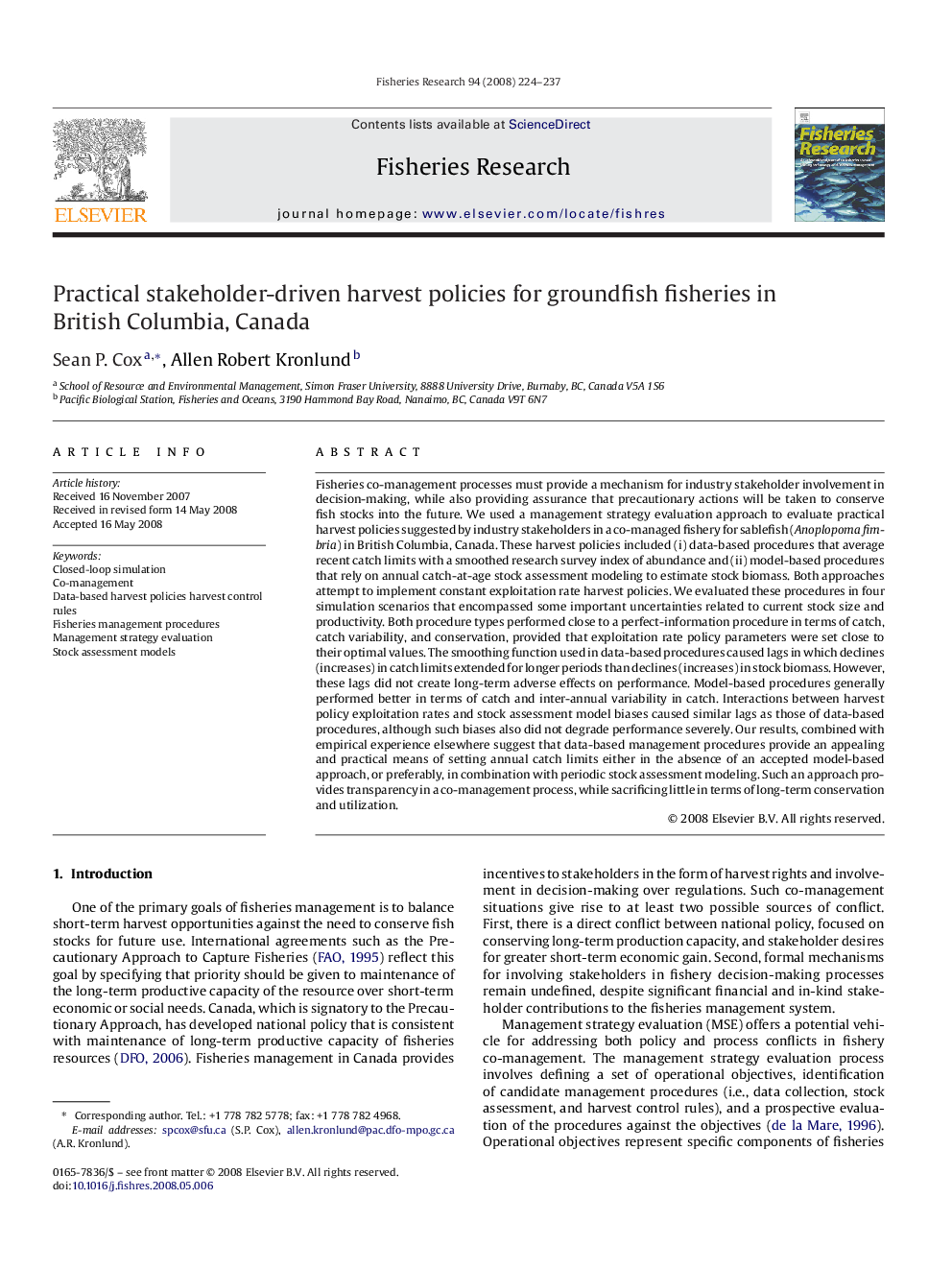| Article ID | Journal | Published Year | Pages | File Type |
|---|---|---|---|---|
| 4544479 | Fisheries Research | 2008 | 14 Pages |
Abstract
Fisheries co-management processes must provide a mechanism for industry stakeholder involvement in decision-making, while also providing assurance that precautionary actions will be taken to conserve fish stocks into the future. We used a management strategy evaluation approach to evaluate practical harvest policies suggested by industry stakeholders in a co-managed fishery for sablefish (Anoplopoma fimbria) in British Columbia, Canada. These harvest policies included (i) data-based procedures that average recent catch limits with a smoothed research survey index of abundance and (ii) model-based procedures that rely on annual catch-at-age stock assessment modeling to estimate stock biomass. Both approaches attempt to implement constant exploitation rate harvest policies. We evaluated these procedures in four simulation scenarios that encompassed some important uncertainties related to current stock size and productivity. Both procedure types performed close to a perfect-information procedure in terms of catch, catch variability, and conservation, provided that exploitation rate policy parameters were set close to their optimal values. The smoothing function used in data-based procedures caused lags in which declines (increases) in catch limits extended for longer periods than declines (increases) in stock biomass. However, these lags did not create long-term adverse effects on performance. Model-based procedures generally performed better in terms of catch and inter-annual variability in catch. Interactions between harvest policy exploitation rates and stock assessment model biases caused similar lags as those of data-based procedures, although such biases also did not degrade performance severely. Our results, combined with empirical experience elsewhere suggest that data-based management procedures provide an appealing and practical means of setting annual catch limits either in the absence of an accepted model-based approach, or preferably, in combination with periodic stock assessment modeling. Such an approach provides transparency in a co-management process, while sacrificing little in terms of long-term conservation and utilization.
Related Topics
Life Sciences
Agricultural and Biological Sciences
Aquatic Science
Authors
Sean P. Cox, Allen Robert Kronlund,
